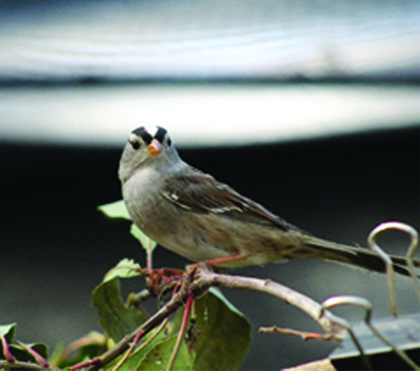The Winter Royals
By Cori Carlson, Administrative Coordinator

Adult White-crowned Sparrow
White-crowned Sparrows are one of the many migrating bird species we see each year at California Wildlife Center. On average, we admit 10 of the large gray sparrows each year. As adults they are easily identified by the black-and-white stripes on their head and their pale pink or yellow beaks. These birds most often come to our facility after being caught by a cat or striking a window.
These sparrows tend to be generalists when finding a place to live. They are commonly seen in brushy areas and also in open grasslands. The birds migrate each year, living in the mountains during the summer and flying to the southwest lowlands in the winter. They start their migration south in September and return back north around April. At California Wildlife Center, we usually see the sparrow patients between October and May.
You will often see White-crowned Sparrows in flocks foraging on the ground near bushes and trees for safety. When you hear rustling on the ground it may be a White-crowned Sparrow scratching to find food. Similar to Towhee species, the White-crowned Sparrows can be heard rustling around on the ground, often called, “double-scratching.” They quickly hop backwards to flip over leaves and then pounce to catch insects.
While in care at CWC, our wildlife technicians provide the birds with enrichment, activities designed to mimic their wild environment. Some of the ways we do this is by adding familiar foliage to their enclosures and skewering a variety of berries on the branches to imitate how they forage. These birds eat a variety of seeds, insects and berries in the wild. At CWC, their diet consists of mealworms, a special Songbird mix and berries.
It has been said that the White-crowned Sparrows return to the same area each year so if you are lucky you might see the same birds year after year.
